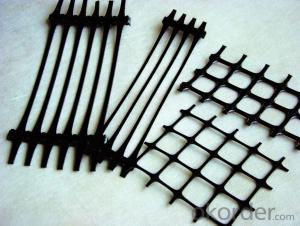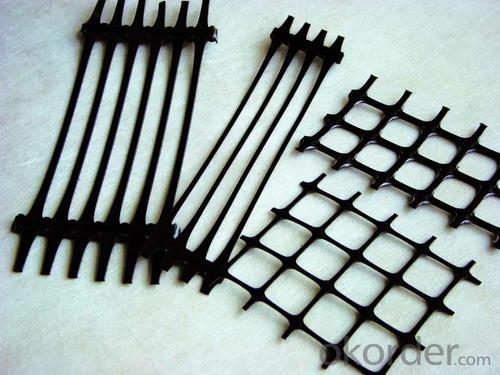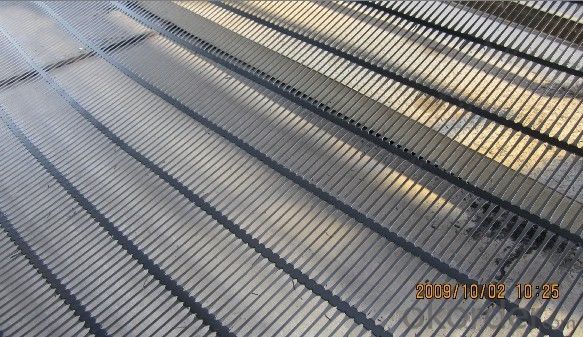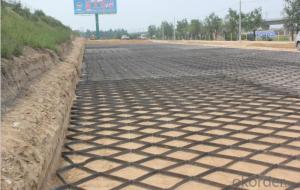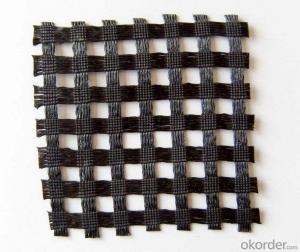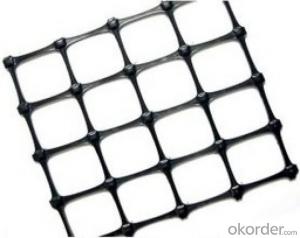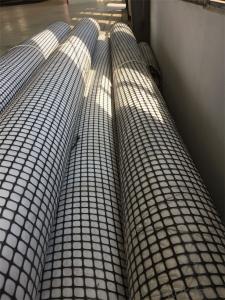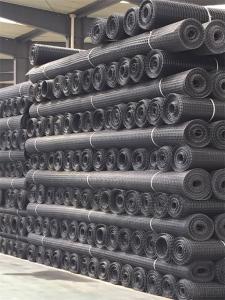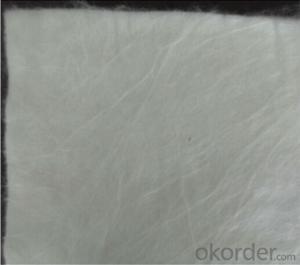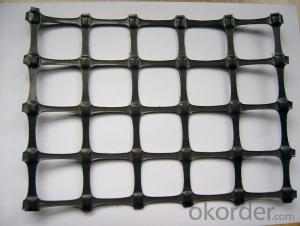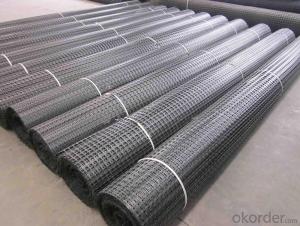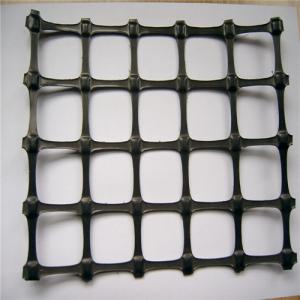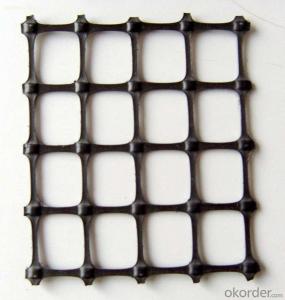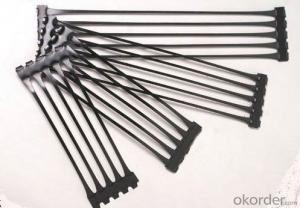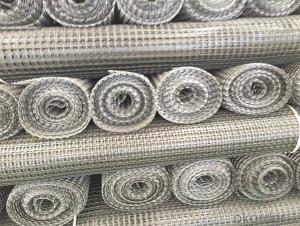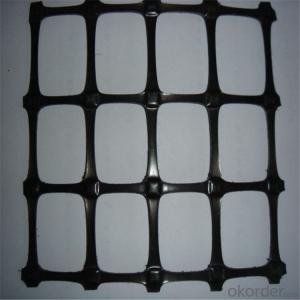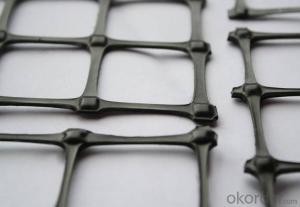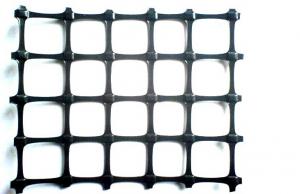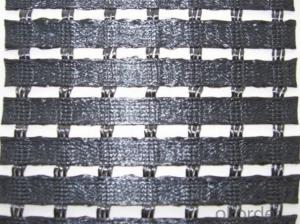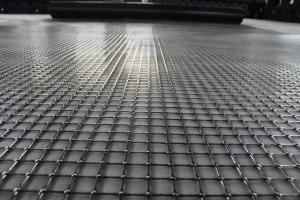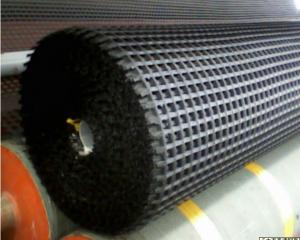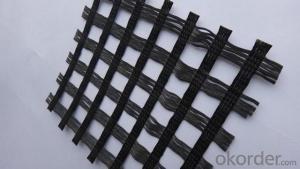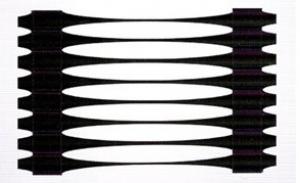Strataweb Geocells Reinforcement Uniaxial PP Geogrid
- Loading Port:
- China Main Port
- Payment Terms:
- TT or LC
- Min Order Qty:
- -
- Supply Capability:
- -
OKorder Service Pledge
OKorder Financial Service
You Might Also Like
1. Product Description:
Double-direction geogrid is made of high molecular polymer through extrusion, forming and punching before longitudinal and lateral stretching. This material has considerable tensile strength in longitudinal and lateral directions. This chain structure can effectively bear and diffuse forces on soil and is applicable to large area permanent load bearing foundation as a reinforce.
2. Product Characteristic:
1. Increase the bearing capacity of the roadbed and foundation and prolong their service life.
2. Prevent road surface and foundation from sinking or flawing, keep clean and beautiful ground surface.
3. Convenient construction saves time and labor, reduce mounting time and decrease maintenance expense.
4. Enhance earth slope and prevent water loss and soil erosion.
5. Decrease underlayer thickness and save manufacturing cost.
3.Specification :
Item | TGSG15-15 | TGSG20-20 | TGSG25-25 | TGSG30-30 | TGSG40-40 |
Longitudinal Tensile Strength,kN/m | 15 | 20 | 25 | 30 | 40 |
Transverse Tensile Strength,kN/m | 15 | 20 | 25 | 30 | 40 |
Longitudinal Yield Elongation,% | 15 | ||||
TransverseYield Elongation,% | 13 | ||||
Longitudinal Yield Strength at 2% Elongation,kN/m | 5 | 7 | 9 | 11 | 14 |
Transverse Yield Strength at 2% Elongation,kN/m | 5 | 7 | 9 | 11 | 14 |
Longitudinal Yield Strength at 5% Elongation,kN/m | 7 | 14 | 17 | 21 | 30 |
Transverse Yield Strength at 5% Elongation,kN/m | 7 | 14 | 17 | 21 | 30 |
Product Length/roll,m | 50 | 40 | |||
Product width ,m | 3.9/3.95/4 | ||||
4. Reference Picture:
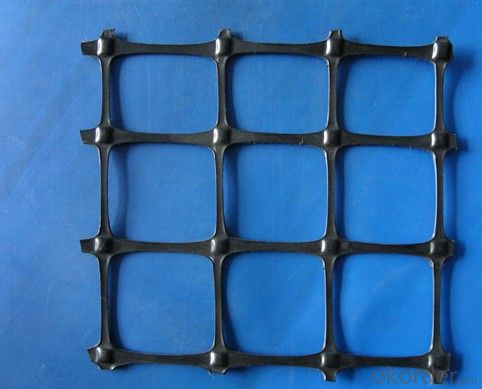
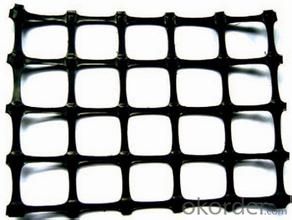
- Q: How do geogrids improve the performance of geotextile-reinforced embankments?
- Geogrids improve the performance of geotextile-reinforced embankments by providing additional tensile strength and stability. They prevent the lateral spreading of soil and enhance load distribution, reducing the potential for settlement and deformation. Geogrids act as a reinforcement layer, increasing the overall strength and durability of the embankment structure, thereby improving its stability and long-term performance.
- Q: Can geogrids be used in slope stabilization?
- Yes, geogrids can be used in slope stabilization. Geogrids are often employed to reinforce and stabilize slopes by providing additional strength and resistance to soil erosion. They are effective in preventing slope failures and can be used in various applications such as retaining walls, embankments, and slopes where erosion control is required.
- Q: Geogrid price? Solution!
- 3 for the road surface, so that the grid and pavement materials are mixed together, can effectively disperse the load transfer, to prevent road cracks;4 can withstand a certain impact load;5 can withstand large alternating load;6 shorten the construction cycle;7 in harsh environmental conditions, can also be constructed;8 can prevent frost caused by surface subsidence and crack;9 can reduce the amount of pavement material;
- Q: Can geogrids withstand heavy loads?
- Yes, geogrids are designed to withstand heavy loads. They are made from high-strength materials and have a structural design that allows them to distribute and transfer loads effectively. Geogrids are commonly used in various applications such as road construction, retaining walls, and slope stabilization, where they provide reinforcement and increase the load-bearing capacity of the soil or aggregates they are installed with.
- Q: What are the differences between geogrids and geosynthetic clay liners?
- Geogrids and geosynthetic clay liners (GCLs) are both types of geosynthetics used in civil engineering, but they differ in terms of composition, function, and application. Geogrids are typically made of high-strength polymer materials, such as polyester or polypropylene, and are designed to provide reinforcement and stabilization to soil or aggregate layers. They have a grid-like structure with open apertures that allow for soil interlocking, enhancing the load-bearing capacity of the soil. Geogrids are commonly used in applications such as retaining walls, road construction, and erosion control. On the other hand, geosynthetic clay liners (GCLs) consist of a layer of natural sodium bentonite clay sandwiched between two geotextile layers. The clay layer acts as a hydraulic barrier, providing excellent seepage control and preventing the migration of liquids or gases. GCLs are often employed in environmental containment systems, such as landfill liners or caps, and in other applications that require effective containment of fluids. In summary, while geogrids primarily focus on reinforcement and stabilization of soil, geosynthetic clay liners specialize in seepage control and containment. Their differing compositions and functions make them suitable for distinct engineering purposes.
- Q: How do geogrids enhance soil reinforcement?
- Geogrids enhance soil reinforcement by providing additional tensile strength and stability to the soil. They are placed within the soil layers and act as a reinforcement material, distributing the forces and reducing the potential for soil movement. This helps to increase the overall strength and performance of the soil, making it more resistant to erosion, deformation, and other types of failures.
- Q: How do geogrids help in reducing construction material consumption?
- Geogrids help in reducing construction material consumption by providing reinforcement to the soil, allowing for the use of less material in the construction process. They increase the strength and stability of the soil, enabling the use of thinner layers of construction materials such as aggregates or concrete. This results in cost savings and reduced environmental impact due to the reduced use of materials.
- Q: What is the effect of creep on geogrid performance?
- The effect of creep on geogrid performance is that it can cause long-term deformation and reduced tensile strength over time. Creep refers to the gradual movement or deformation of a material under constant load or stress. In the case of geogrids, prolonged exposure to sustained load or stress can result in creep, leading to a loss of the geogrid's initial stiffness and load-bearing capacity. This can negatively impact its ability to provide soil reinforcement, stability, and confinement, compromising its overall performance in geotechnical applications. Therefore, creep considerations are crucial when designing and selecting geogrids for long-term projects.
- Q: Can geogrids be used in reinforcement of concrete pavements?
- Yes, geogrids can be used in the reinforcement of concrete pavements. Geogrids are commonly used to enhance the structural integrity and performance of concrete pavements by providing additional tensile strength and distributing loads more effectively. They can help prevent cracking and increase the overall durability of the pavement.
- Q: How do geogrids enhance the performance of flexible retaining structures?
- Geogrids enhance the performance of flexible retaining structures by providing reinforcement and stability. They increase the strength and load-bearing capacity of the soil, preventing excessive movement and deformation. Geogrids also distribute the applied forces more uniformly, reducing the risk of localized failure. Additionally, they improve the overall durability and longevity of the retaining structure by mitigating the effects of soil erosion and settling.
Send your message to us
Strataweb Geocells Reinforcement Uniaxial PP Geogrid
- Loading Port:
- China Main Port
- Payment Terms:
- TT or LC
- Min Order Qty:
- -
- Supply Capability:
- -
OKorder Service Pledge
OKorder Financial Service
Similar products
Hot products
Hot Searches
Related keywords
